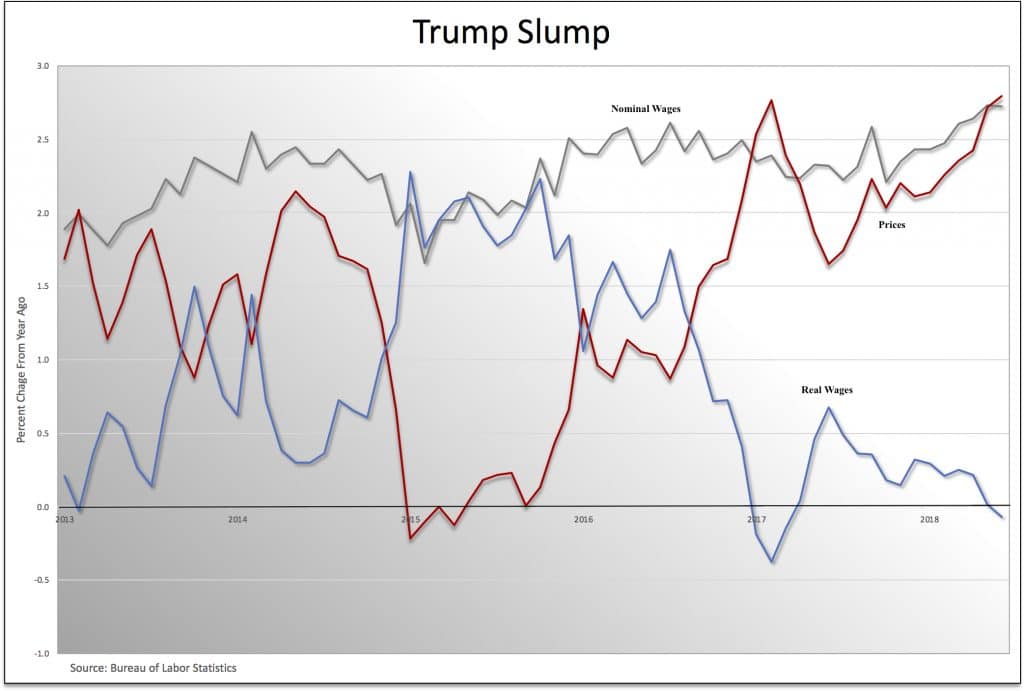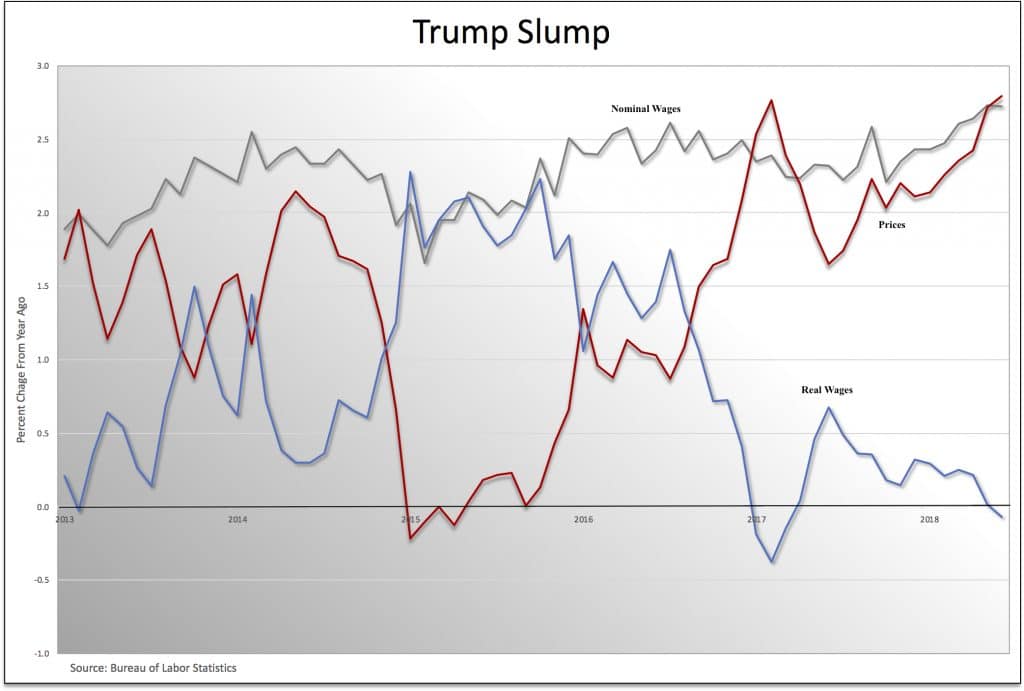Marketplace’s Kai Ryssdal is no class warrior. Far from it. But after Donald Trump’s chief economic adviser Larry Kudlow spent considerable time during a recent interview celebrating the latest statistics about economic growth, jobs, and wages and minimizing the effects of the trade tariffs, Ryssdal was encouraged to challenge him:
Ryssdal: Look, sir, really with all respect that’s easy for you to say sitting here on the second floor of the West Wing of the White House.
Kudlow: Now, don’t class warfare me or anything like that.
OK, let’s not class warfare him. Let’s just do some simple calculations. In June, hourly wages (for production and nonsupervisory workers in the private sector) rose at an annual rate of 2.7 percent. Prices (as measured by the Consumer Price Index) rose at an annual rate of 2.8 percent. That means real wages—workers’ purchasing power—actually declined, by 0.1 percent.
As is clear from the chart above, even as hourly wages (the grey line) have been growing by 2.2 to 2.7 percent since Trump was inaugurated, inflation (the red line) has also been rising, by 2.5 to 2.8 percent. The result is that the rate of growth of real wages (the blue line), which started in negative territory, is still in negative.
So, a year and a half after Trump took office, lots of conventional economic numbers look good: GDP growth, corporate profits, the stock market, the unemployment rate, and so on all point in a positive direction. Now, it’s a stretch to call it the Trump Bump, since it’s basically a continuation of the recovery that preceded his election. But we can let Trump and Kudlow revel in those numbers, which improve the fortunes of a small group of large corporations and wealthy individuals at the top.
However, it’s the rate of growth of real wages that affects the majority of Americans—and it indicates what can only be called a Trump Slump.
Put the two together and it sounds like class warfare to me. And it’s being directed not at but from the West Wing of the West House.


